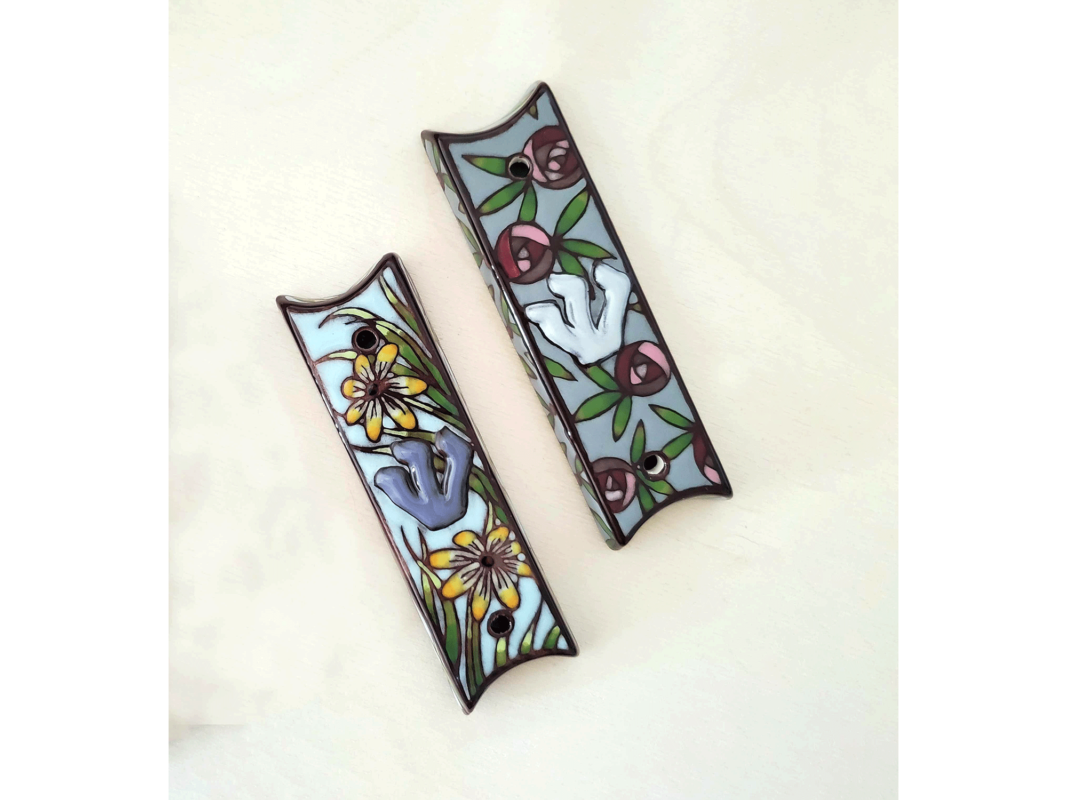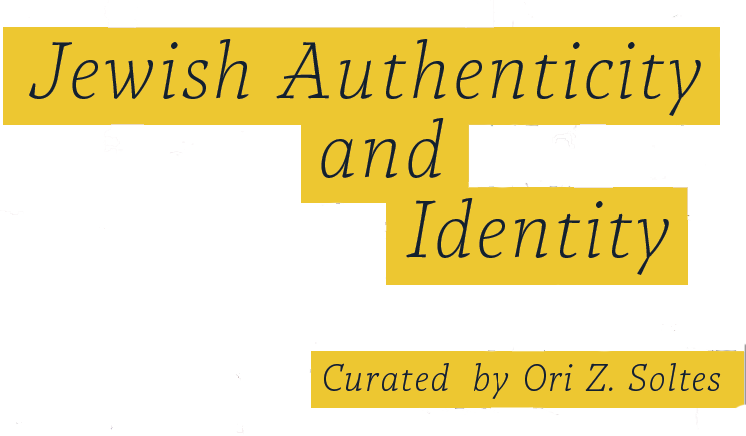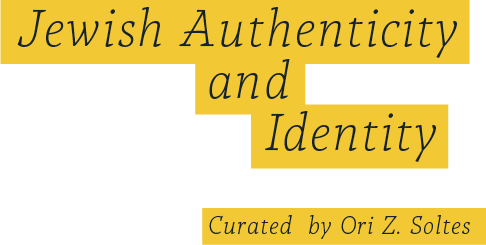
“Black-Eyed Susans mezuzah,” Bonnie Zuckerman, 2019, hand-painted ceramic with wax resist, 4.75” x 1.25” x .5”
“Roses mezuzah,” Bonnie Zuckerman, 2019, hand-painted ceramic with wax resist, 4.75” x 1.25” x .5″
As the arc of this exhibition offered multiple starting points, one might find its conclusion to be similarly multiple. For one, the “Black-Eyed Susans” mezuzot contrived of hand-painted ceramic with wax resist by Bonnie Zuckerman, from Ellicott City, MD, offer yet another kind of ceremonial object—not marking time, which is the sort of concept more central to Jewish thought, but space. Mezuzah, which means “doorpost” becomes, of course, the term used to refer to the object placed on the doorposts of a Jewish home—fulfilling the doubly-stated commandment enunciated in both Deut 6:9 and Deut 11:20 to “write it upon the doorposts of thy house and upon thy gates.” So, it is that within the mezuzah a piece of parchment contains those words and others from the Torah—it is God’s word that one inscribes upon the doorposts.—front and back. And thus, Zuckerman’s exquisite little works—ritual objects transformed into works of art, fall, as it were, at the backdoor of this discussion of the exhibition.
The artist follows a tradition of emblazoning the mezuzah with the Hebrew letter “shin”, to stand for the word “Shaddai”—one of the names of the God whose Name is ineffable; this particular “Name” refers specifically to God’s power-protector aspect. So the container marked by that letter and filled with God’s words is a protective amulet. She adds to it elements from the natural and unnatural world, all of it encompassed by God: the yellow blossoms of black-eyed Susans, the purplish, not-yet-ripe fruit of the olive tree, the six-pointed star that has become a Jewish symbol, in bold primary colors. In any and all cases she fulfills another dictum, derived from Ex 15:2 (“This is my God and I will glorify/beautify Him”), that came to be interpreted by the early second-century CE Rabbi Ishmael as hiddur mitzvah—“beautifying the commandment” which is also turned around as a “commandment to beautify”—that accounts for the variously styled and symbol-laden embellishments of an endless range of Jewish ceremonial objects, and in this case, the objects that, in both beautifying the doorposts of the house and placing the word of God at its entrances and exits, transforms an otherwise profane living space into something sacred: a place where the presence—the shekhinah—of God and the love of humans and of God, reside, shaping an island of calm within the maelstroms of the outside world.
Bonnie Zuckerman creates highly detailed, one of a kind hand-painted ceramics. She uses a wax resist technique to create a stained glass effect on her pieces. Each piece of art tells a whimsical story and incorporates imagery from her personal visual lexicon. Favorite subjects include birds and other animals, flowers, and fairy tale landscapes. Bonnie graduated from Towson University with a degree in Illustration. She studied abroad in Florence, Italy, where she completed an independent advanced study in painting. Bonnie works in a variety of other media as well, including watercolor, acrylic, oil, collage, drawing, printmaking, and fiber art. Bonnie has exhibited her work in a variety of juried and non-juried shows throughout Maryland. Check out more of Bonnie’s work on bakerartist.org/portfolios/bonnie-zuckerman, and follow her on Instagram @bonnie.zuckerman.

